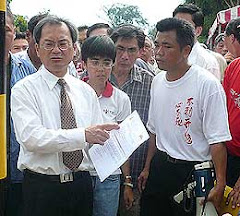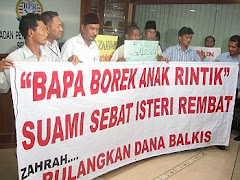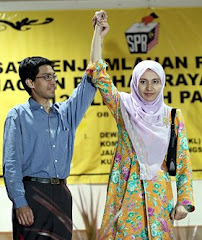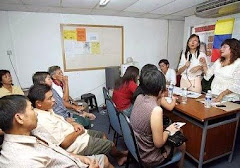BUKIT Sri Bintang residents are unhappy with the Kuala Lumpur City Hall (DBKL) for destroying the staircase along Jalan 3/36 without notice.
According to a resident, City Hall officers came at about 10.30am with two bulldozers, six lorries and two vans to demolish the staircase.
 Eyesore: Residents pointing to the destroyed staircase as Lim (fourth from right) looks on.
Eyesore: Residents pointing to the destroyed staircase as Lim (fourth from right) looks on.Taman Bukit Sri Bintang Rukun Tetangga (RT) chairman Angus Ng said he suspected that this was an act by City Hall to warn that there should be no tables and chairs placed along five-foot ways.
“However, many municipal councils allow business owners to place chairs and tables outside as long as the local community do not object to it.
“And these people pay the council a fee.
“There should be laws and guidelines for restaurants or coffeeshops to continue placing chairs outside as long as public safety is not compromised,’’ he said.
He added that he was also concerned for the safety of the residents as now the drains were left uncovered.
Ng said residents understood that the officers were doing their job but that they were irked that they were not given ample warning about the demolition.
He said City Hall should discuss with community leaders before taking such drastic action.
Yong Man Kim, the owner of Restaurant Double Seven, said the staircase in front of his restaurant was originally built with steel but it was not sturdy. Many residents use it to cross the drain, which is 1.3m deep.
“However, the stairs have no connection between restaurants placing tables and chairs on the road side.
“I do not understand why they demolished the staircase.
He said since the demolition, he had not opened for business. He said 25 other shop owners were also affected.
Segambut MP Lim Lip Eng said the rubble left behind after the demolition was an eyesore, adding that he would ask City Hall to clear the mess.
“The steel drain covers and recyclable materials were taken away.
“City Hall should be placing drain covers instead of taking them away,” he said.





















